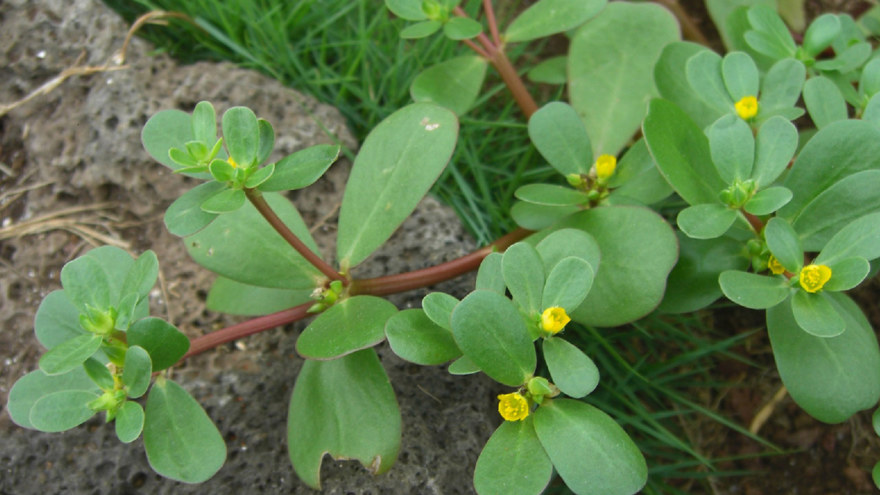Purslane
Purslane
Purslane or Portulaca oleracea is an annual succulent that is one of the most common species of weeds in the world. They look like a tangled wild mess of reddish stems and dark green leaves that grow in all directions. This plant is also referred to as duckweed, fatweed, pigweed, and pursley. This succulent is a fast spreading, annual that grows throughout North America during the summer months. Purslane is most commonly found in bare areas and low-maintenance lawns, and cracks of sidewalks.
Depending on your view of the species, it can be considered a weed to some, while to others a plant.
Treatment
If you are on the side of purslane as a weed, there are a few ways to get rid of it.
The best treatment of purslane is prevention. A thick, healthy, full yard is the best way to crowd out purslane, preventing from having room to extend it’s roots. This can be accomplished with aeration and over seeding in the fall. Also, mowing height is important. Raise your mower to it’s highest setting for the healthiest lawn.
Another option is to hand pull the weed, while it is young. This is imperative if you want to prevent it from throwing its seeds to other parts of your lawn or garden. The seeds can reach a lengthy distance. Sunlight is all the seeds need to germinate, so covering the once affected area with a heavy layer of mulch can prevent the purslane from germinating.
These weeds can also be sprayed with a herbicide, also to be applied while they are young.
Benefits
Do you have dry skin or hair? Do you have difficulty concentrating? You may be suffering from an Omega-3 deficiency. What does this have to do with a plant? Well, let’s tell you about it.
Purslane is an excellent source of omega-3 fatty acid; it has the highest level of alpha-linolenic compared to any leafy green vegetable. The plant also has a substantial amount of fiber, vitamin A, vitamin C, and iron, just to name a few.
Cooking with the plant is easy. Use it in a salad with lettuce and your favorite add ins. It can also be used as a substitute for spinach in any recipe. The flavor is described as crunchy with a lemon taste.
An interesting fact; Mahatma Gandhi ate the purslane plant as part of his daily diet.

